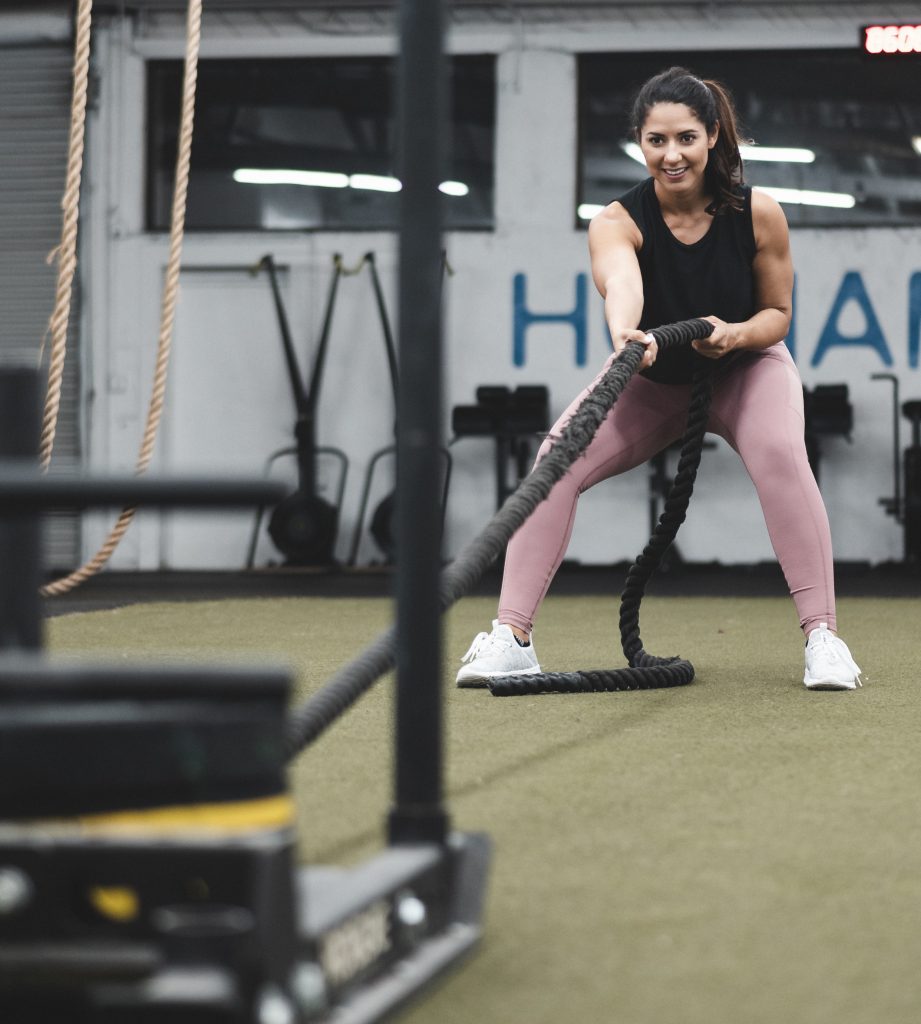We ladies spend a fortune on beauty products, cosmetics, and medical procedures in the name of anti-aging. It’s a booming business – $551 billion globally in 2021 to be exact, with no signs of slowing down.
Fine lines and multiple visits to the hair salon are expensive and annoying, and women are conditioned to spend, spend, spend in the name of youthfulness. But if I had to bet on the best anti-aging medicine that far too many women ignore it has got to be strength training. Specifically, getting strong and athletic.
Maybe you want to start playing in a rec league on weekends to get yourself outside the house and meet new people. Or perhaps you’ve started playing golf and want to bring your kids along with you for a fun family bonding experience. There are a million reasons why women (and men) would benefit from building or maintaining their athleticism as they age, and it truly is the best anti-aging “secret” of all.
Characteristics of an Athlete
A lot of the women I’ve worked with do not consider themselves athletes in the traditional sense. They [wrongfully] assume that because they have desk jobs or never played in a team sport, that building a strong, athletic and durable body is not a worthwhile goal for them. With time, they realize the faulty logic in that and start embracing training for strength and athleticism.
I’d argue that remaining ageless requires a dose of athleticism. It’s the first thing people lose as they age in addition to muscle mass and bone density.
Contrary to popular belief, athleticism is not defined merely by one’s ability to play sports. It can be part of it, but certainly is not a requirement. The Webster Dictionary definition agrees with me too:
Athleticism: the physical qualities that are characteristic of athletes, such as strength, fitness, and agility.
When someone asks you, “Are you an athlete?”, forget about your age or the last time you played a sport, if ever. Start thinking about the characteristics of an athlete. Do you possess strength, fitness, and agility? Do you embody the training and mindset of an athlete? Is there an area where you are dialed in more than others?
The answers to these questions are the woman’s guide to anti-aging training.
I recently started playing sand volleyball here in Nashville as a way to get me outside of the day-to-day routine, meet people, and be active outside of the gym. Having no prior experience with this sport, I knew the learning curve would be high skills-wise, but I possess a decent baseline of strength and fitness to dive right in.
Instead of starting from scratch like many people do (i.e. starting to workout for the first time) or just jumping into games mindlessly, I began my preparation with:
- Developing power, jumping and single-leg landing mechanics
- Building more unilateral strength
- Integrating more shoulder and ankle performance care work
- Intentional aerobic and anaerobic conditioning
The ability to start a new sport in your late thirties or later is the definition of ageless in my book. Most people at this age or older bemoan the aches and pains of getting older and warn other young people to “just wait until you get older! Everything starts to break down!”
I’m against this negative self-talk because 1) it does nothing to propel you forward from a fitness or athletic standpoint and 2) it becomes a crutch to avoid doing something altogether.
Strength training and conditioning are of the utmost importance for performance and injury prevention regardless of your athletic ability or age. The older you get, the more intentional the work becomes and it starts with power development – a key component of most general fitness programs.
Developing power, jumping and single-leg landing mechanics
It’s impossible for me to enjoy a new hobby like volleyball without obsessing over the details on how to improve (Is there a support group for us?). I am 37 years young with a background in long-distance running and strength sports like powerlifting and Olympic weightlifting. I know what I’m good at (lifting heavy objects and tackling distance) and more importantly, what I am not so good at (speed, high jumps, reactive strength).
Perhaps you want to get your own dose of anti-aging medicine by jumping into a new sport or hobby that requires athleticism. You may not care about being elite, but you strive for excellence and wish to enjoy yourself in the process without getting hurt.
Where do you start?
Align your training with the goal. Train for strength, speed, and durability – the anti-aging trifecta. If I want to keep playing and improve over time, developing power, jumping and landing mechanics and single-leg strength is paramount.
Plyometrics that make sense
Far too many people approach plyometrics as a conditioning tool, or worse, to feel like they’ve busted their ass in a workout. If your goal is to feel like you did a lot of work, then keep going. However, both approaches will be detrimental to developing those athletic characteristics.
When power development is the goal, the selected exercise(s) will occur at the start of your workout when you’re fresh and before the strength work begins. Low rep ranges (3-6), adequate rest, and focus. There are a variety of plyometrics to utilize. Here are a few in my current rotation.
Box Jumps
The concentric box jump is one of my favorite box jump drills. While most box jumps emphasize the eccentric loading position, the concentric phase of this involves extension of the hips, knees, and ankles while removing momentum to build lower body power from the ground up. I also find these enjoyable and that’s enough reason to keep them.
The most common plyometric/box jump variation, of course, is your standard standing box jump used to increase the vertical jump and reinforce good landing mechanics. This is often where I start a client once they’ve mastered a few basic movement patterns and baseline of strength.
Depth and Drop Jumps
Depth and drop jumps are helpful for building explosiveness and should be used based on what the person needs. Let’s review the components of each one.
Depth Jump for maximal jump height
- Start from a high platform or box (height will vary depending on the person). The higher the box, the greater the impact and force absorption required on the ground.
- The angle of the drop is around 20-30 degrees
- Land in a greater degree of knee flexion resulting in longer contact time with the ground
- This is a maximal effort exercise. Keep the rep ranges low (1-3) and plenty of rest in between sets
Here’s a great example from Wil Fleming.
Drop Jumps for quick rebound
- The box height is small here, from 6-24”
- Land in a shallow degree of knee flexion that allows for a quick rebound time and staying tall throughout
- Focus on muscular and tendon stiffness
- This is submaximal effort and power output so you can string a few more reps together as fatigue is lower
Unilateral Strength
As a former powerlifter, the Big Three (barbell squat, bench press, and deadlift) have been a big part of my strength training programs for a long time. They are bilateral movements with tons of carryover outside the gym and I’m grateful for how it’s set me up to start playing a new sport whenever I want. However, training like a powerlifter hinders athleticism to a degree. You miss out on the speed, quickness, and conditioning characteristics because frankly, that’s not needed in the sport of powerlifting at all.
Training unilaterally for sport is a key factor in joint integrity and muscular balance no matter who you are. People complain about everything hurting as they age because they lack unilateral power and strength! I’m speaking generally here but looking around at any commercial gym confirms my theory – we simply do not train enough unilateral strength for athleticism.
In a sport like volleyball (or softball, basketball – pick one!) it’s natural to favor one side over the other whether it’s hitting, jumping or landing. That’s a lot of wear and tear on one side. For working women hunching over a desk for hours on end or carrying their kid on one side over another, you’ve doubled the amount of wear and tear.
More unilateral strength in the form of split squats, lunges, landmine presses, and rows in various planes of motion will build up the missing pieces in your athleticism. Instead of obsessing about getting a “tighter, leaner core” how about training trunk stability side to side? Or perhaps instead of a barbell bench press why not a single arm floor press and standing landmine press with explosiveness?
Look around at some of the female athletes you most admire. They look good and perform like they’re ageless for a reason. They have all components of athleticism and train for performance; the aesthetics come as a result of that work.
To truly defy time and age, start by building your athleticism.



